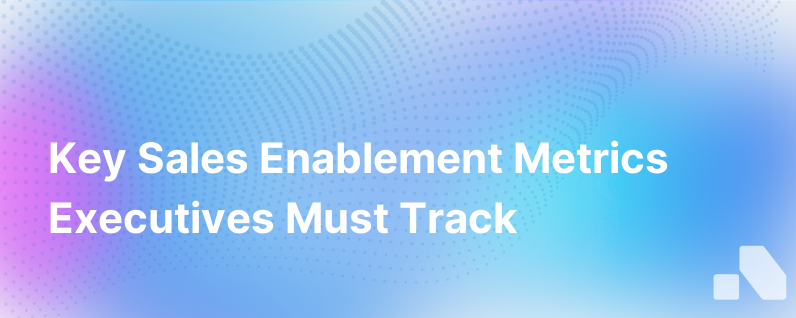
Whether you're a startup or an established corporation, if your business involves selling a product or service, then the importance of having impactful sales enablement cannot be overstated. Sales enablement is the function that allows sales representatives to sell at a higher capacity and close more deals. However, for the sales enablement process to be truly beneficial, it needs to be measured.
In this article, we'll talk about what sales enablement is, why it matters, and most importantly, the key metrics and KPIs you should be tracking to ensure your sales enablement process is successful and value-adding.
Understanding Sales Enablement
Sales enablement is the process of providing your sales team with the necessary tools, content, knowledge, and skills to sell more effectively. The primary goal is to ensure sales reps can engage effectively with prospects and close more deals. It’s about equipping your sales team to have the right conversation, at the right time, with the right customer.
Why Measure Sales Enablement?
To drive revenue, increase productivity and improve sales performance, organizations must measure the efficiency and effectiveness of their sales enablement programs.
Measuring and tracking sales enablement metrics helps organizations understand how well their initiatives are working. Are the tools, materials, and training provided to your sales team leading to more closed deals and increased revenue? The only way to answer this is by determining and evaluating sales enablement metrics.
Essential Sales Enablement Metrics
Here are five key sales enablement metrics that every organization should be tracking:
1. Sales Cycle Duration
This metric measures the length of time from when a lead enters your pipeline to when they become a customer. The goal is to shorten this window, thus speeding up sales. If your sales enablement process is working as planned, your sales cycle should be decreasing over time.
2. Conversion Rate
The conversion rate shows you how many leads turn into customers. A high conversion rate indicates effective sales enablement—it means your sales reps are equipped with the tools, content, and knowledge they need to demonstrate your product's value to prospects.
3. Deal Size
Average deal size indicates the average revenue yielded per closing deal. The larger the average deal size, the greater the revenue. A consistent increase in deal size is a good indicator of an effective sales enablement strategy.
4. Sales Training Consumption
If you're providing your sales team with training materials, you should track how many of your sales reps consume them. A spike in training consumption likely means your reps find them useful and are engaged and involved in their sales enablement.
5. Time Spent Selling
With effective sales enablement, your team should be spending less time on administrative tasks and more time selling. Tracking time spent selling can help you gauge how valuable your sales enablement tools are to your teams' productivity.
How Can AI Help in Measuring these Metrics?
Sales enablement doesn’t stop at making sure your sales reps have the tools, resources, and training they need. Modern sales enablement involves using cutting-edge AI technology to turn data into actionable insights to adjust strategies and better enable your team.
AI sales tools like Aomni facilitate the collection of vast amounts of real-time data, allowing businesses to measure sales enablement metrics with unmatched speed and accuracy. With AI, businesses can gain deeper insights into their sales activities and understand in real-time how their sales enablement strategies impact specific metrics.
Conclusion
In conclusion, sales enablement is crucial to the success of your sales team and, ultimately, your business. It can only be fruitful if regularly measured and adjusted to ensure your team has everything they need to increase conversions, shorten sales cycles, and close bigger deals.
Consider implementing a sales enablement technology, like Aomni, to automate the measurement of your sales enablement strategy - it can provide granular insights needed to understand what's working and what areas need improvement. This measurement and the resulting insights allow you to adjust your strategies and ensure that each sales rep is fully equipped to close higher-value deals faster and more efficiently.